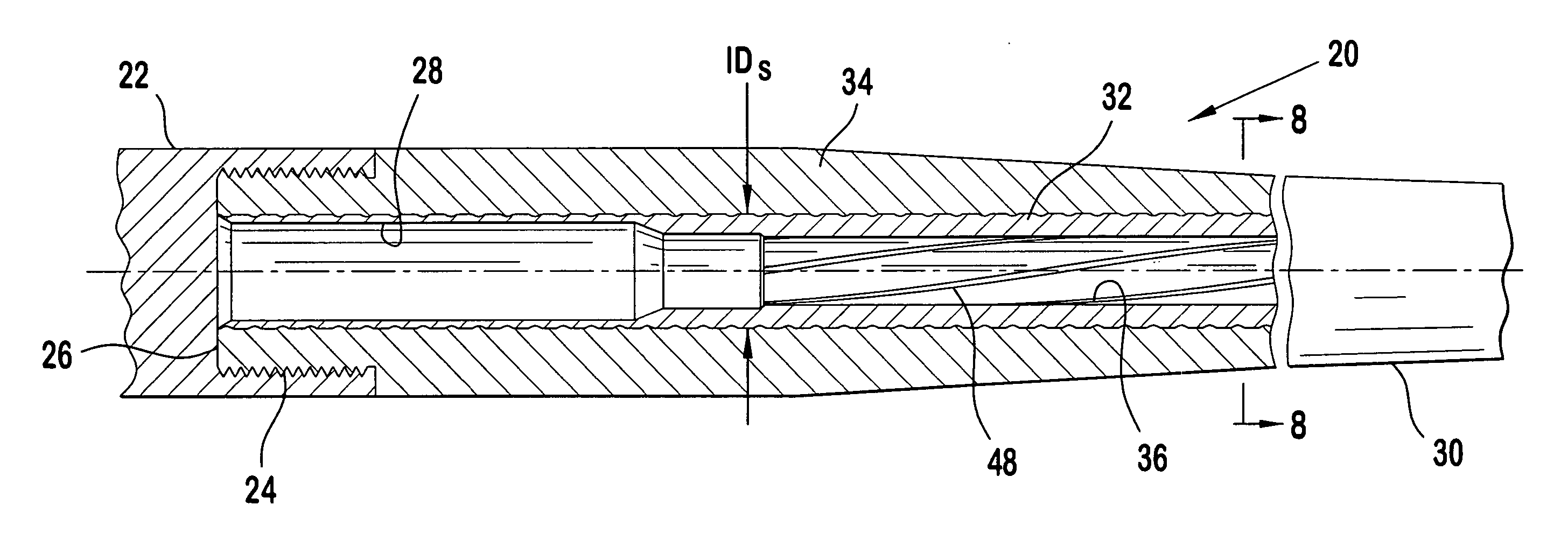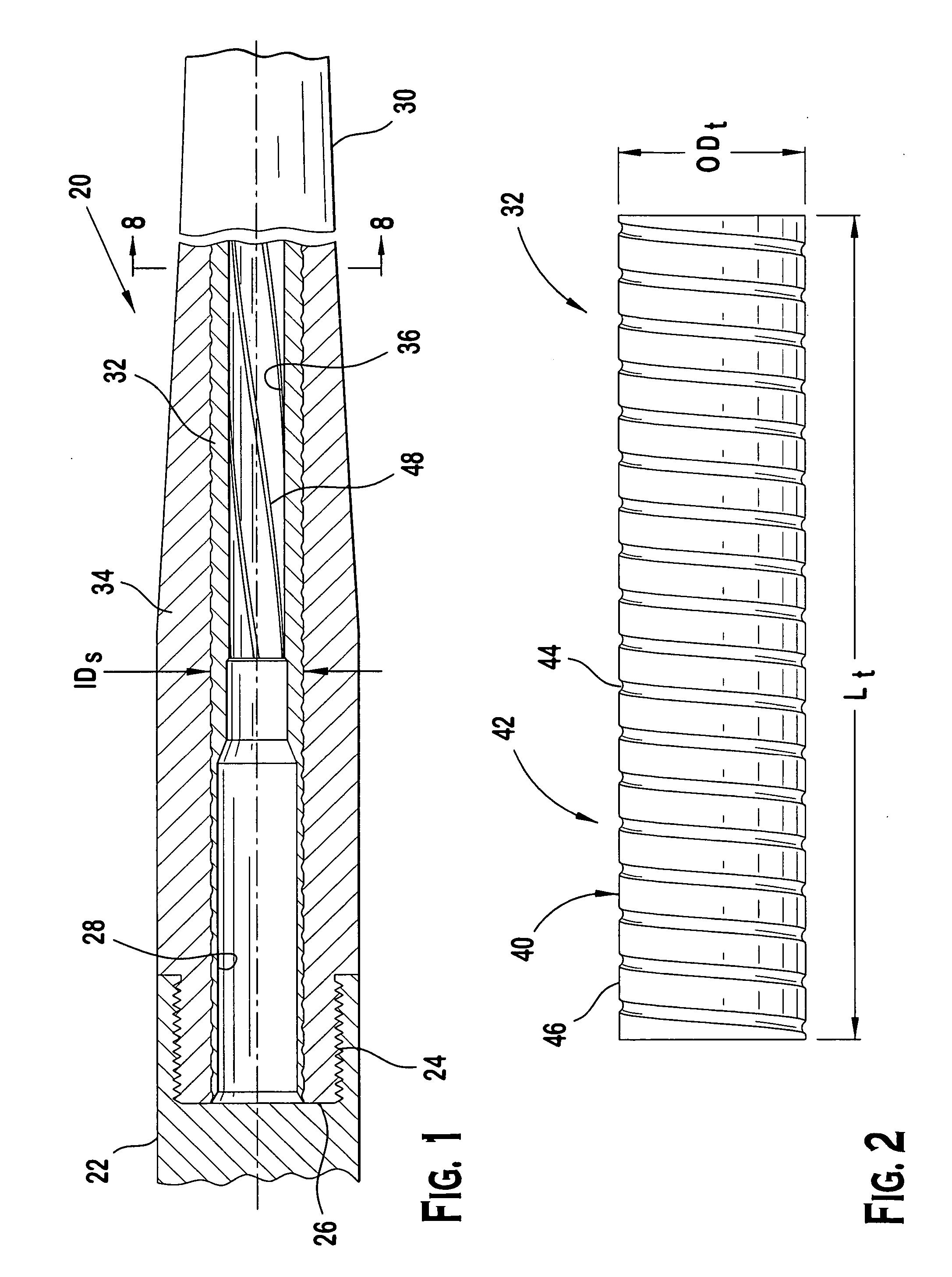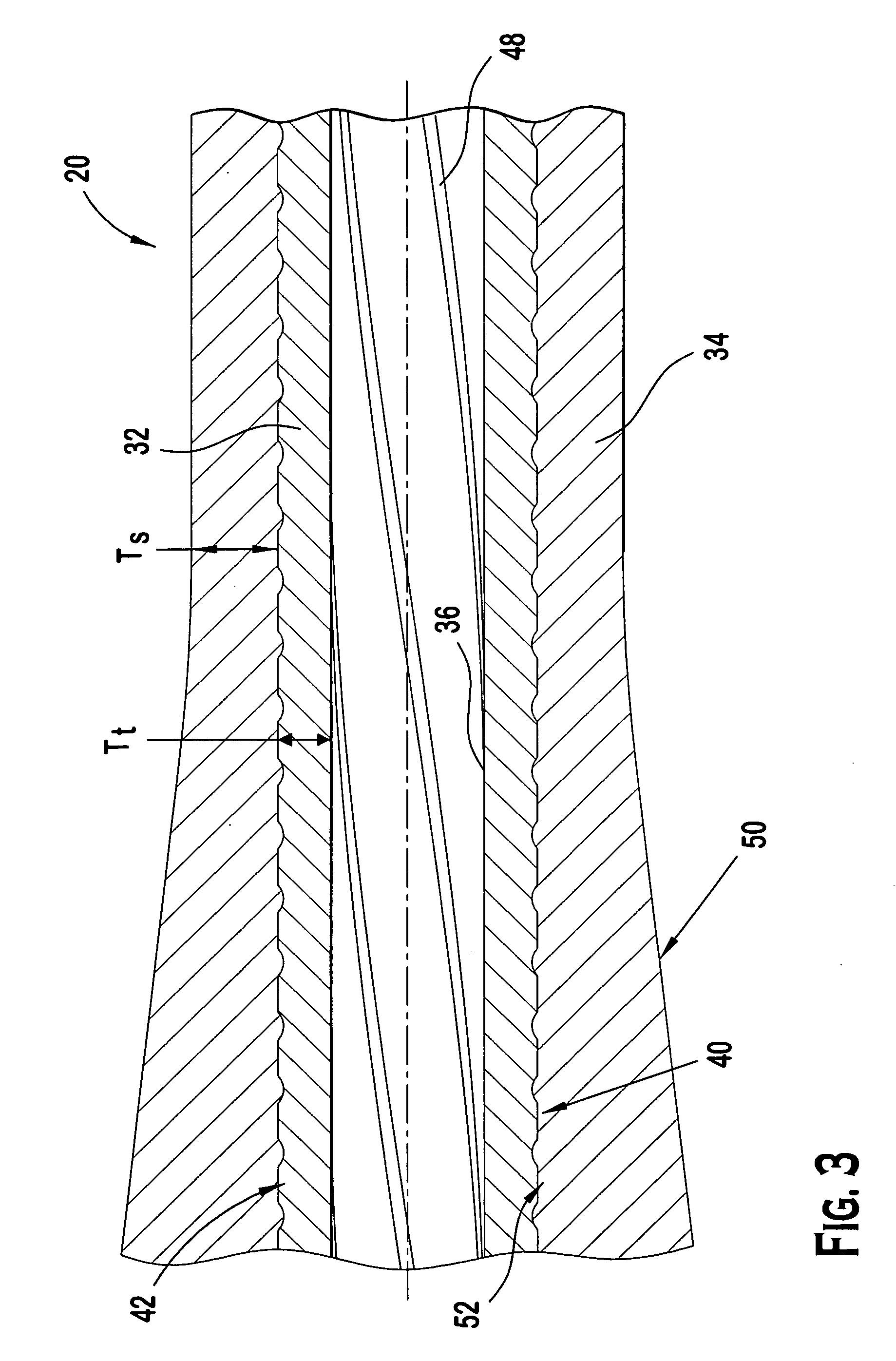Composite firearm barrel
a composite and firearm barrel technology, applied in the field of composite firearm barrels, can solve the problems of cumbersome carrying of steel-barreled firearms for long periods of time or to hold steady, high manufacturing cost of barrels, and heavy weight of steel-barreled firearms, and achieves efficient and economical manufacturing, superior and strong bond
- Summary
- Abstract
- Description
- Claims
- Application Information
AI Technical Summary
Benefits of technology
Problems solved by technology
Method used
Image
Examples
Embodiment Construction
[0022] In order that the invention may be understood, a preferred embodiment, which is given by way of example only, will now be described with reference to the drawings. The preferred embodiment is described for convenience with reference and without limitation to a firearm barrel for a rifle. However, the principles disclosed herein may be used with equal advantage for a pistol or handgun. According, the invention is not limited in this respect. Moreover, the process for manufacturing composite material parts described herein may equally be employed for making light-weight components other than firearm barrels where weight and manufacturing savings are advantageous, such as in the aerospace industry. Accordingly, the preferred process described herein to make composite articles is not limited to firearm barrel production alone.
[0023] Referring now to FIG. 1 which shows a cross-section of a portion of a firearm, a firearm formed according to principles of the present invention in ...
PUM
| Property | Measurement | Unit |
|---|---|---|
| width | aaaaa | aaaaa |
| width | aaaaa | aaaaa |
| angle | aaaaa | aaaaa |
Abstract
Description
Claims
Application Information
 Login to View More
Login to View More - R&D
- Intellectual Property
- Life Sciences
- Materials
- Tech Scout
- Unparalleled Data Quality
- Higher Quality Content
- 60% Fewer Hallucinations
Browse by: Latest US Patents, China's latest patents, Technical Efficacy Thesaurus, Application Domain, Technology Topic, Popular Technical Reports.
© 2025 PatSnap. All rights reserved.Legal|Privacy policy|Modern Slavery Act Transparency Statement|Sitemap|About US| Contact US: help@patsnap.com



